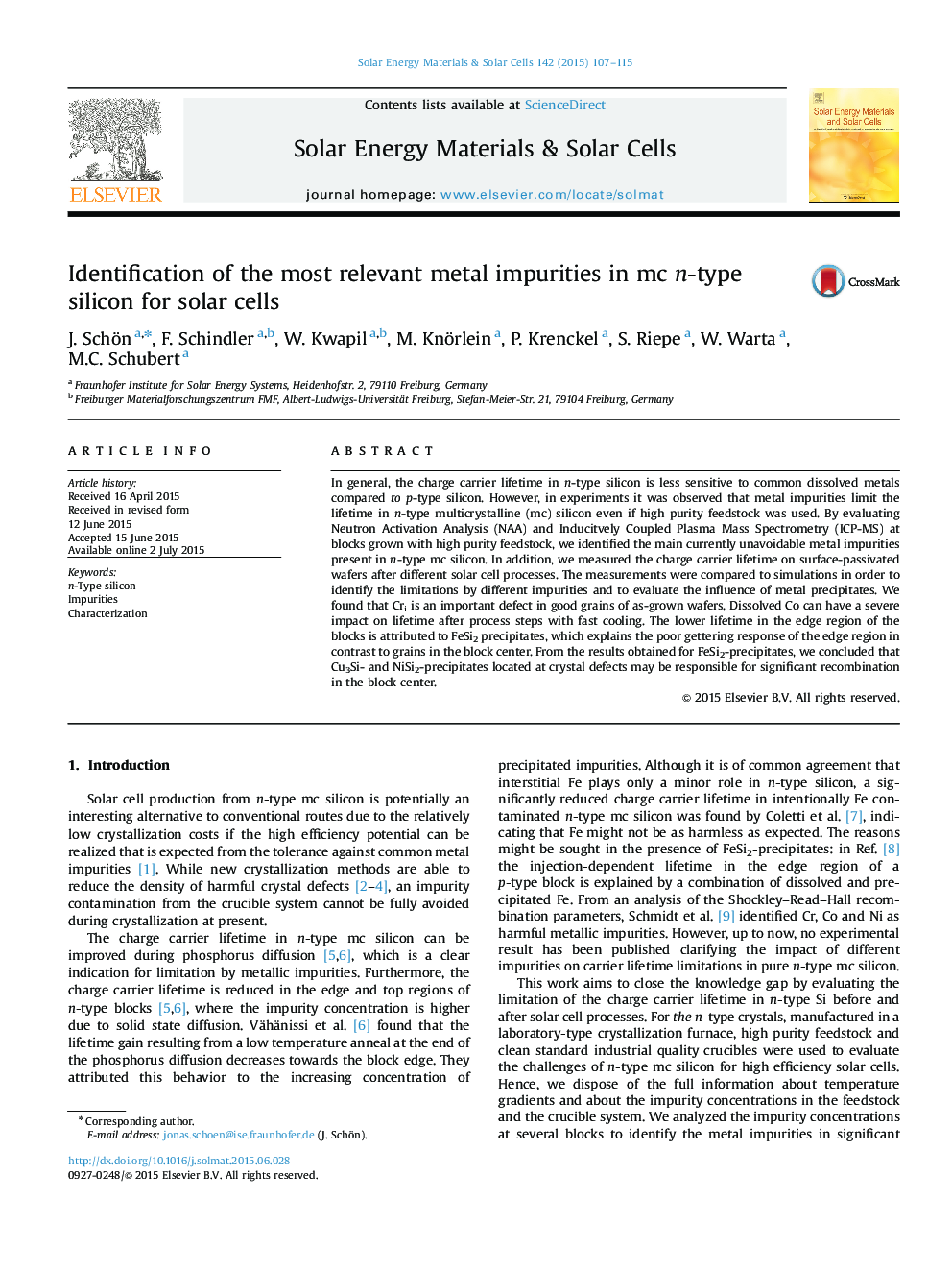| Article ID | Journal | Published Year | Pages | File Type |
|---|---|---|---|---|
| 77806 | Solar Energy Materials and Solar Cells | 2015 | 9 Pages |
•We identified the main metal impurities present in n-type mc silicon.•Cri is an important defect in good grains of as-grown wafers.•Lower lifetime in the edge region of the blocks is attributed to FeSi2 precipitates.•Dissolved Co can be severe after process steps with fast cooling.
In general, the charge carrier lifetime in n-type silicon is less sensitive to common dissolved metals compared to p-type silicon. However, in experiments it was observed that metal impurities limit the lifetime in n-type multicrystalline (mc) silicon even if high purity feedstock was used. By evaluating Neutron Activation Analysis (NAA) and Inducitvely Coupled Plasma Mass Spectrometry (ICP-MS) at blocks grown with high purity feedstock, we identified the main currently unavoidable metal impurities present in n-type mc silicon. In addition, we measured the charge carrier lifetime on surface-passivated wafers after different solar cell processes. The measurements were compared to simulations in order to identify the limitations by different impurities and to evaluate the influence of metal precipitates. We found that Cri is an important defect in good grains of as-grown wafers. Dissolved Co can have a severe impact on lifetime after process steps with fast cooling. The lower lifetime in the edge region of the blocks is attributed to FeSi2 precipitates, which explains the poor gettering response of the edge region in contrast to grains in the block center. From the results obtained for FeSi2-precipitates, we concluded that Cu3Si- and NiSi2-precipitates located at crystal defects may be responsible for significant recombination in the block center.
